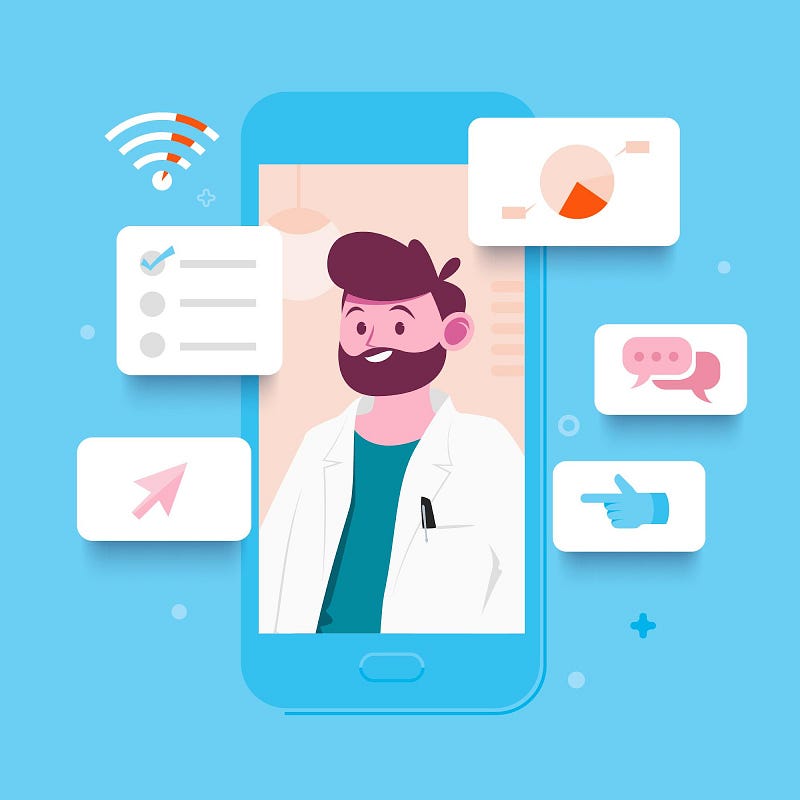Beyond the Clinic: Telemedicine App Development for the Digital Age
In today’s rapidly evolving healthcare landscape, telemedicine app development has become a cornerstone of modern medical practice. The digital age demands innovative solutions, and telemedicine app builders are stepping up to the challenge, creating platforms that extend the reach of healthcare professionals beyond traditional clinic walls.
The Rise of Telemedicine
The global pandemic accelerated the adoption of telehealth, highlighting the necessity for remote healthcare solutions. As patients and providers adjusted to new norms, the convenience and effectiveness of telemedicine became evident. Now, as we move forward, the development of sophisticated telehealth apps is not just a trend but a vital component of healthcare delivery.
Historical Context
Telemedicine isn’t an entirely new concept. The idea of remote consultations can be traced back to the use of telephones and radios for medical advice in the early 20th century. However, technological advancements in the last two decades, particularly the proliferation of smartphones and high-speed internet, have revolutionized telemedicine, making it a practical and efficient mode of healthcare delivery.
Current Landscape
Today, telemedicine encompasses a wide range of services, including virtual doctor visits, remote monitoring, and mobile health apps. This versatility has made telemedicine a preferred choice for many patients seeking convenient and timely medical care. The market for telehealth is expanding rapidly, with projections indicating significant growth in the coming years.
Key Features of Telemedicine Apps
Successful telemedicine app development hinges on several critical features that ensure functionality, security, and user satisfaction:
User-Friendly Interface: Both patients and healthcare providers need an intuitive interface that facilitates easy navigation and use.
Secure Communication: Ensuring HIPAA compliance and data encryption is crucial for maintaining patient confidentiality and trust.
Appointment Scheduling: A seamless system for booking, rescheduling, and canceling appointments enhances user experience.
Real-Time Consultation: High-quality video and audio capabilities are essential for effective virtual consultations.
EHR Integration: Integrating Electronic Health Records (EHR) allows for efficient data management and access to patient history.
Payment Processing: Secure and straightforward payment gateways streamline transactions for both patients and providers.
The Role of Telemedicine App Builders
Telemedicine app builders are the architects behind these digital solutions, using their expertise to bring innovative ideas to life. They focus on creating robust platforms that cater to the unique needs of healthcare providers and patients alike. These builders leverage advanced technologies such as AI, machine learning, and blockchain to enhance app functionalities and ensure top-notch security.
Marketing Your Telemedicine App
Effective marketing is crucial to ensure the success of your telemedicine app. Start by identifying your target audience — whether it’s individual patients, healthcare providers, or large medical institutions. Use a mix of digital marketing strategies such as SEO, content marketing, and social media campaigns to build awareness and generate interest. Highlight the unique features and benefits of your app, such as ease of use, security, and the ability to provide high-quality remote care. Additionally, consider partnerships with healthcare organizations and influencers in the medical field to expand your reach and credibility. Providing free trials or demo versions can also help potential users experience the value of your app firsthand.
Steps to Develop a Telemedicine App
Developing a telehealth app involves several crucial steps:
Market Research: Understand the target audience and identify the needs and preferences of potential users.
Define Features: Determine the core features that your app will offer based on user needs and market trends.
Design UI/UX: Create a user-centric design that is both attractive and easy to navigate.
Develop and Test: Engage in iterative development and rigorous testing to ensure the app performs well and is free of bugs.
Launch and Maintain: Deploy the app to the market and continually update it based on user feedback and technological advancements.
Future Trends in Telehealth App Development
The future of telehealth app development looks promising with several trends on the horizon:
AI and Machine Learning: These technologies will enhance diagnostic accuracy and personalize patient care.
Wearable Integration: Telemedicine apps will increasingly integrate with wearable devices to monitor patient health in real-time.
Blockchain Technology: For improved security and transparency in handling patient data.
Virtual Reality (VR): VR can be used for remote diagnostics and training healthcare professionals.
Conclusion
Telemedicine app development is transforming the way healthcare is delivered, breaking down barriers and making medical services more accessible. As telemedicine app builders continue to innovate, the future of healthcare looks brighter and more connected. Embracing these digital advancements not only meets the current demands but also sets the stage for a more efficient and patient-centric healthcare system.
